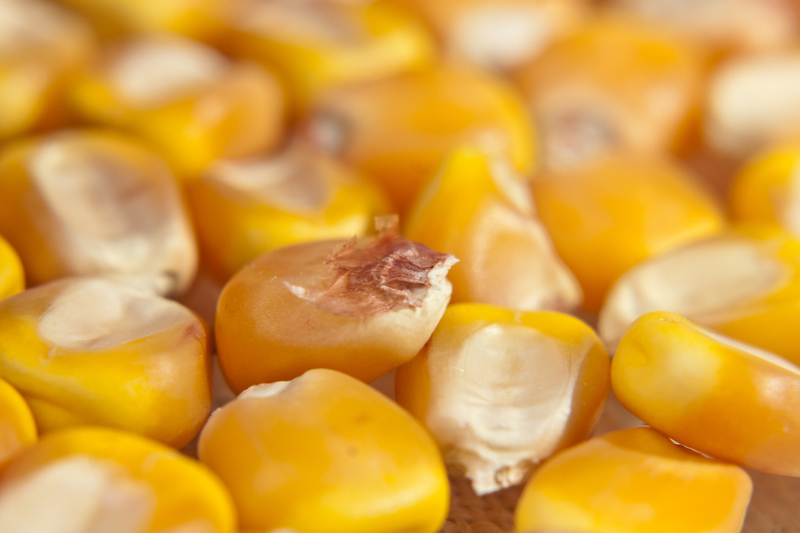Reducing costs with smaller corn particle size

Grinding yellow dent corn to a finer particle size can help producers reduce feed costs by enable pigs to derive more energy from the corn, new US research indicates.
According to a recent publication in the Journal of Animal Science, the smaller particle size allows pigs to derive more energy from the corn, which means producers can reduce the amount of fat added to diets (reducing their costs) without affecting the growth performance or carcass characteristics of pigs
What if corn was ground to different particle sizes?
In cooperation with his lab, Dr Hans H. Stein, professor of animal sciences at the University of Illinois, United States, conducted an experiment to determine if growth performance and carcass characteristics differed among pigs fed diets that had the same amount of energy, but contained corn that was ground to different particle sizes. In the US, current industry recommendations call for corn fed to pigs to be ground to a particle size of around 650 microns.
In a press release, Stein commented, “When corn is ground to smaller particle sizes, pigs can derive more energy from it because the increase in surface area means that digestive enzymes have more access to the nutrients in corn, which results in increased digestibility of starch.”
He continued, “Therefore, you can reduce the amount of fat added to the diets without a loss of metabolisable energy if you use more finely ground corn. In this study, we tested the hypothesis that added fat can be removed from diets containing finely ground corn without impacting growth performance and carcass characteristics of the pigs.”
Also interesting: Small feed ingredients can make a big impact
The role trace minerals have in pig nutrition on the overall well-being and peformance of the pig can be overlooked, but just because the addition in the diet is small it doesn’t mean the impact is, Dr Casey Bradley explains.
Same amount of metabolisable energy
The researchers fed growing-finishing pigs diets containing corn ground to 865, 677, 485, and 339 microns. Diets were formulated to contain the same amount of metabolisable energy by varying the amount of added fat. The diets using the most coarsely ground corn contained 3.60 to 3.87% fat, whereas the diets using the most finely ground corn contained 2% fat.
The carcass characteristics of pigs fed diets containing corn ground to the different particle sizes were very similar. Backfat depth, hot carcass weight, loin eye area, pH of loin eye area, and fat-free lean percentage were not affected by particle size. However, dressing percentage increased, and empty intestinal weight decreased, as particle size decreased.
Growth performance not affected by corn particle size
Growth performance was also not affected by corn particle size. The pigs’ final body weight, overall average daily feed intake, and overall average daily gain were not different among treatments. For gilts, the feed conversion ratio decreased as particle size decreased, but this was attributable to the reduced intestinal weight. When calculated on the basis of hot carcass weight, feed conversion ratio did not differ among treatments.
Stein said that these results indicate that it is possible for producers to reduce feed costs if corn is ground to a finer particle size. “By using corn ground to a smaller particle size, producers can decrease the amount of fat added to growing-finishing diets without affecting growth performance or carcass composition. However, the increased dressing percentage may result in an increase in the amount of saleable meat from the pigs fed diets containing corn ground to a smaller particle size.”
No incidence of ulcers in pig stomachs
Although feeding corn ground to smaller particle sizes has been observed to lead to ulcers in some studies, there was no incidence of ulcers in the oesophageal region of the stomach in pigs in the current study regardless of particle size. However, an increase in keratinization was observed as particle size decreased, which Stein cautioned might lead to ulcers if pigs are stressed.
The paper, ‘Effects of particle size of yellow dent corn on physical characteristics of diets and growth performance and carcass characteristics of growing–finishing pigs‘, was co-authored by Oscar Rojas and Yanhong Liu of the University of Illinois.











